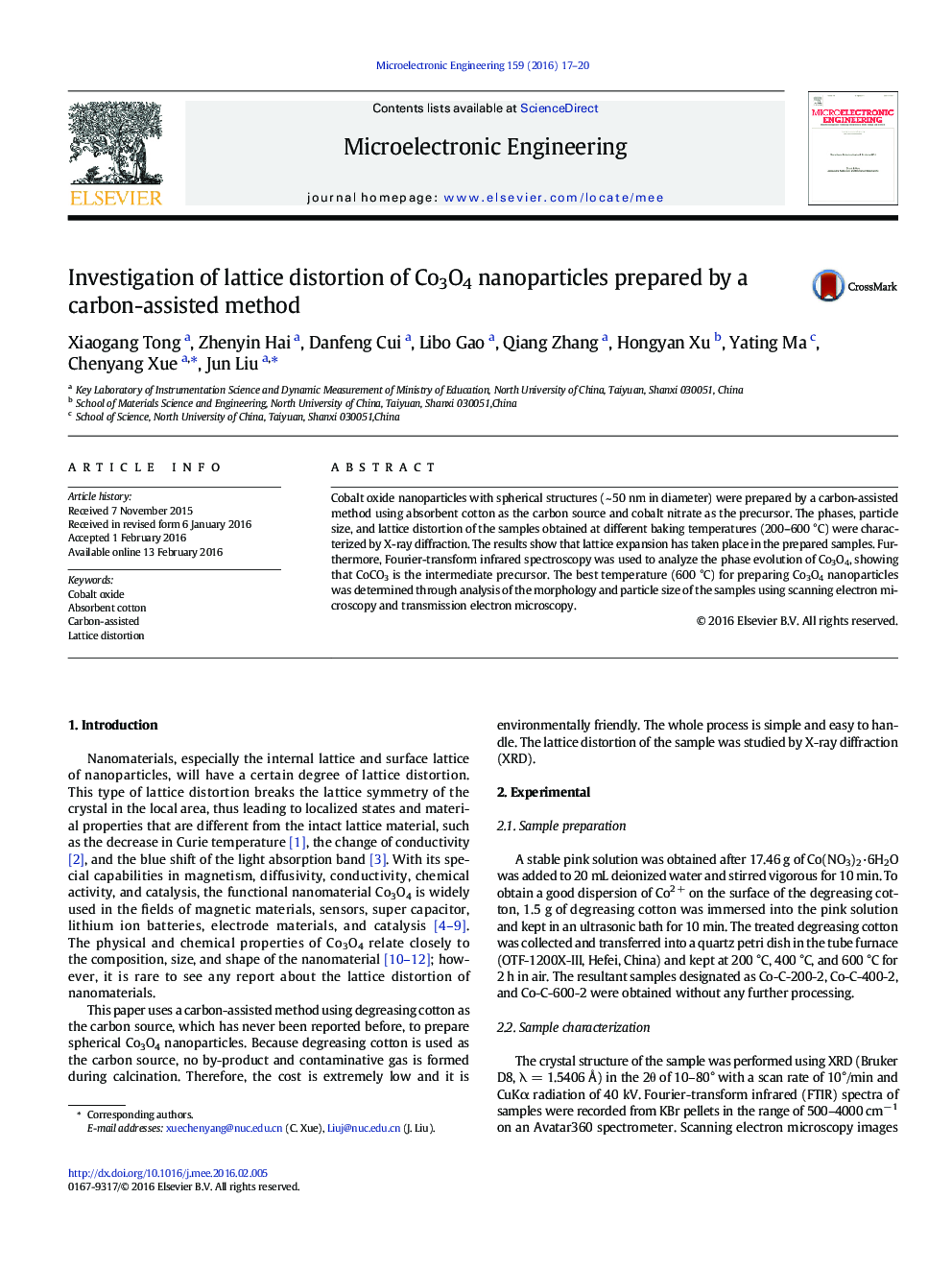| Article ID | Journal | Published Year | Pages | File Type |
|---|---|---|---|---|
| 541094 | Microelectronic Engineering | 2016 | 4 Pages |
•The sample was synthesized by a carbon-assisted method using degreasing cotton.•CoCO3 is the intermediate precursor during the preparation.•The lattice expansion rate is related with calcination temperature and grain size.
Cobalt oxide nanoparticles with spherical structures (~ 50 nm in diameter) were prepared by a carbon-assisted method using absorbent cotton as the carbon source and cobalt nitrate as the precursor. The phases, particle size, and lattice distortion of the samples obtained at different baking temperatures (200–600 °C) were characterized by X-ray diffraction. The results show that lattice expansion has taken place in the prepared samples. Furthermore, Fourier-transform infrared spectroscopy was used to analyze the phase evolution of Co3O4, showing that CoCO3 is the intermediate precursor. The best temperature (600 °C) for preparing Co3O4 nanoparticles was determined through analysis of the morphology and particle size of the samples using scanning electron microscopy and transmission electron microscopy.
Graphical abstractFigure optionsDownload full-size imageDownload as PowerPoint slide
